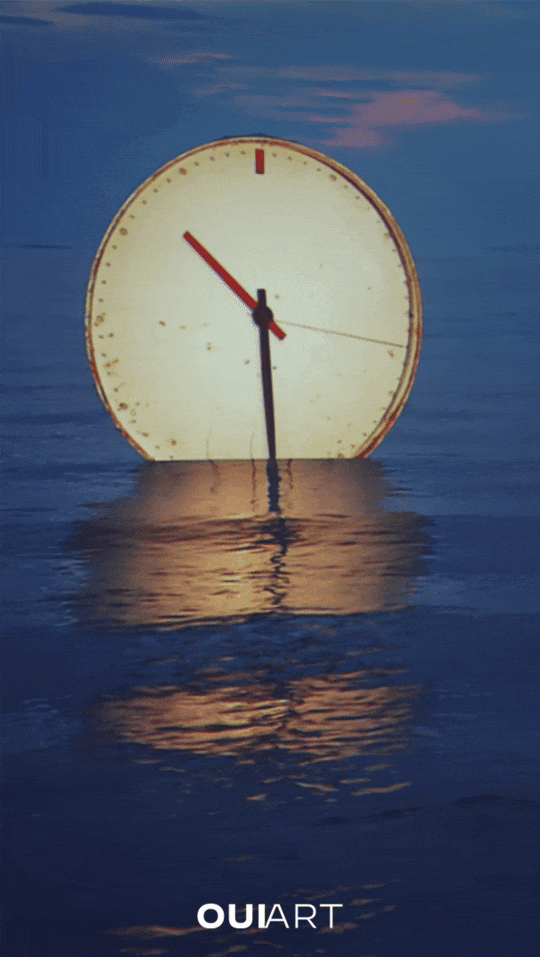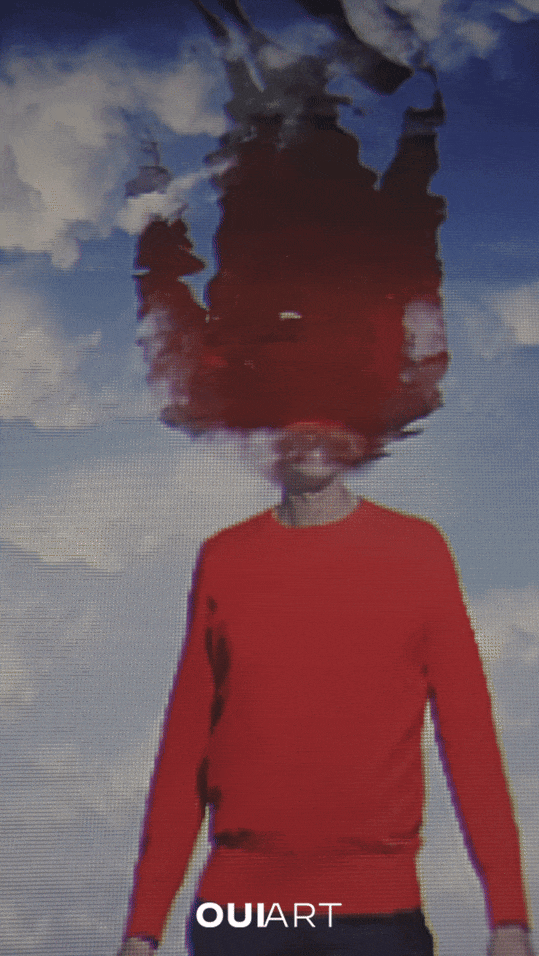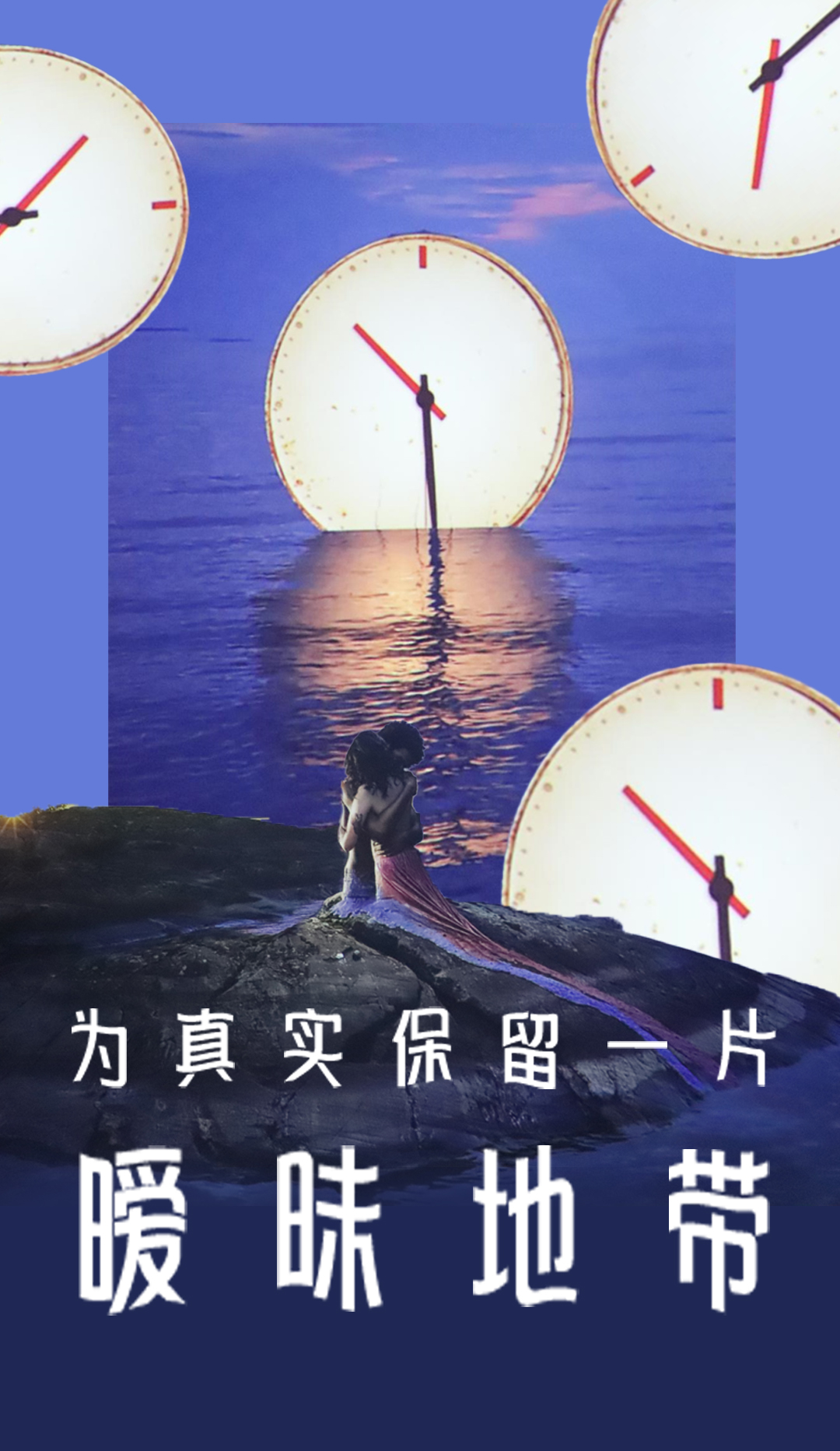
Erik Johansson, a Swedish photographer and visual artist, views photography as a journey of capturing creativity ignited by the shutter. In his work, the ground curls like sheets of paper, lakes are unzipped, buildings form Möbius loops—absurd as these scenarios may seem, they are grounded in a meticulous logic. Through precise masking, perspective correction, and seamless light-matching, he creates a physics-based sense of realism—one that resembles dreams or subconscious “pseudo-documentary” realities, which is precisely the core of surrealism.
Born in 1985 in the small town of Götene in central Sweden, Erik grew up under the influence of his grandmother, a painter, and developed a love for drawing at an early age. At the same time, he was fascinated by computers. At 15, he received his first digital camera, opening a new world of possibilities. In 2005, he moved to Gothenburg to study computer engineering at Chalmers University of Technology, where his interest in photo editing flourished. Gradually, he developed a workflow: first constructing complete images in his mind, then shooting real-world materials,and finally digitally compositing them to achieve visual coherence.
If Erik’s surreal world were a bridge, one end would be anchored in the darkroom techniques of the silver-halide era, while the other would float atop the pixelated clouds of digital algorithms. Standing on this bridge, one witnesses a historical reversal in the river of photography—digital technology has not eroded traditional imaging but instead sharpened the alchemy of the darkroom and the poetry of chemical processes.
For pioneer Man Ray, surrealism was the emotional estrangement behind everyday photograms; for constructivist master László Moholy-Nagy, it was geometric abstraction born from light experiments. Meanwhile, Berlin Dadaist Hannah Höch used photomontage to challenge rigid perceptions. In the 1930s, Brassaï, the nocturnal voyeur of Paris, transformed nighttime pedestrians into ghostly blurs through long exposures, turning the city into a theater of the subconscious. By the 1960s, Jerry Uelsmann, the "magician of imagery" and "alchemist of black and white," defied rational order through complex post-processing techniques.
Although Erik does not employ traditional darkroom techniques like collage, multiple exposures, or negative overlays, his surrealism subverts viewers' habitual understanding of "reality" through extensive on-location photography, post-production, and pixel-perfect editing. In a sense, Erik is like a creator who rediscovers a primal craftsmanship amidst the technological frenzy—using images to fabricate "lies" that counter the absurdities of reality, elevating subconscious expression into a calculable illusion, and ultimately speaking the truth of time.
Notably, Erik insists on using a camera to capture visual materials. He once said, “If you are able to capture it, no one can question that it's realistic”. In an age of mass-produced visual fast food, Erik may spend months manually stitching together reality and fantasy—this slow process itself becomes a kind of avant-garde rebellion. The floating islands, reverse waterfalls, and recurring glaciers and forests in his works hint at both the rupture and reconstruction of humanity’s relationship with nature in the technological age. At the same time, they act as speed bumps against the rapid consumption of visuals: true contemplation takes time to ferment, and the deeper bond between art and viewer takes even longer to form.
As camera resolution and photography technology advance, Erik strives harder than ever to capture the finest details of reality. At the same time, those very details become tactile paradoxes in his imaginary worlds. The montaged reflections, chilliness, night, and light in his images are like painted windows on a wall, beyond which wafts a breeze of unexpected reality. This is perhaps Erik’s most captivating quality: his work preserves an ambiguous zone for "reality." In his seemingly perfect utopias—neither pure depictions of the real nor completely virtual constructs—he uses the absolute rationality of technology to distills an irrational intoxication, a hidden door to the real world.
And for all of us—those seeking to affirm our existence in an increasingly perfected, virtualized, and de-realized world—perhaps each act of viewing, each suspension of the moment brought by the “spectacle,” each gaze and contemplation, allows us to reclaim our sovereignty over perception.
In early 2025, Fotografiska welcomed Erik’s latest solo exhibition, All We Have is Now, featuring works created exclusively for the show. Through fluid, seemingly reasonable yet deeply contradictory poetic dreams, Erik attempts to underscore the importance of the present moment in a daily life space entangled with anxieties of the future and regrets of the past.

Almost all the pieces in this exhibition are your latest works. Compared with your creations five years ago, how do these new works differ in theme and technique?

Over the past five years, my work has evolved in both theme and technique. While I’ve always been drawn to "distorting reality," my recent pieces focus more on introspection, reflection, and the perception of time. Technically, I’ve refined post-production to achieve seamless integration of photographic elements, enhancing the illusion of reality while preserving a dreamlike quality. I’ve also begun experimenting with motion works as part of this exploration.

Your work often reconstructs everyday scenes through collage to challenge our perception of reality. Where does this impulse come from?

It stems from childhood curiosity and a desire to see beyond physical existence. Daydreams, stories, and hidden possibilities in daily life inspire me. The world often feels too structured and predictable; through art, I explore alternative realities that challenge human perception.

Your work blurs the line between photography and digital art. Could you share the creation process of one piece from this show?

Let’s take River Hotel from this exhibition. It began with a simple idea—to turn a “riverside hotel” into a “river hotel.” The concept partly reflects the realities of climate change but also highlights humanity’s adaptability to new environments.
I started by photographing one of Sweden’s largest waterfalls. Then I shot the people and buildings in Prague. Finally, I blended them all together. I even filmed the waterfall on-site to create the animated version presented in the exhibition.
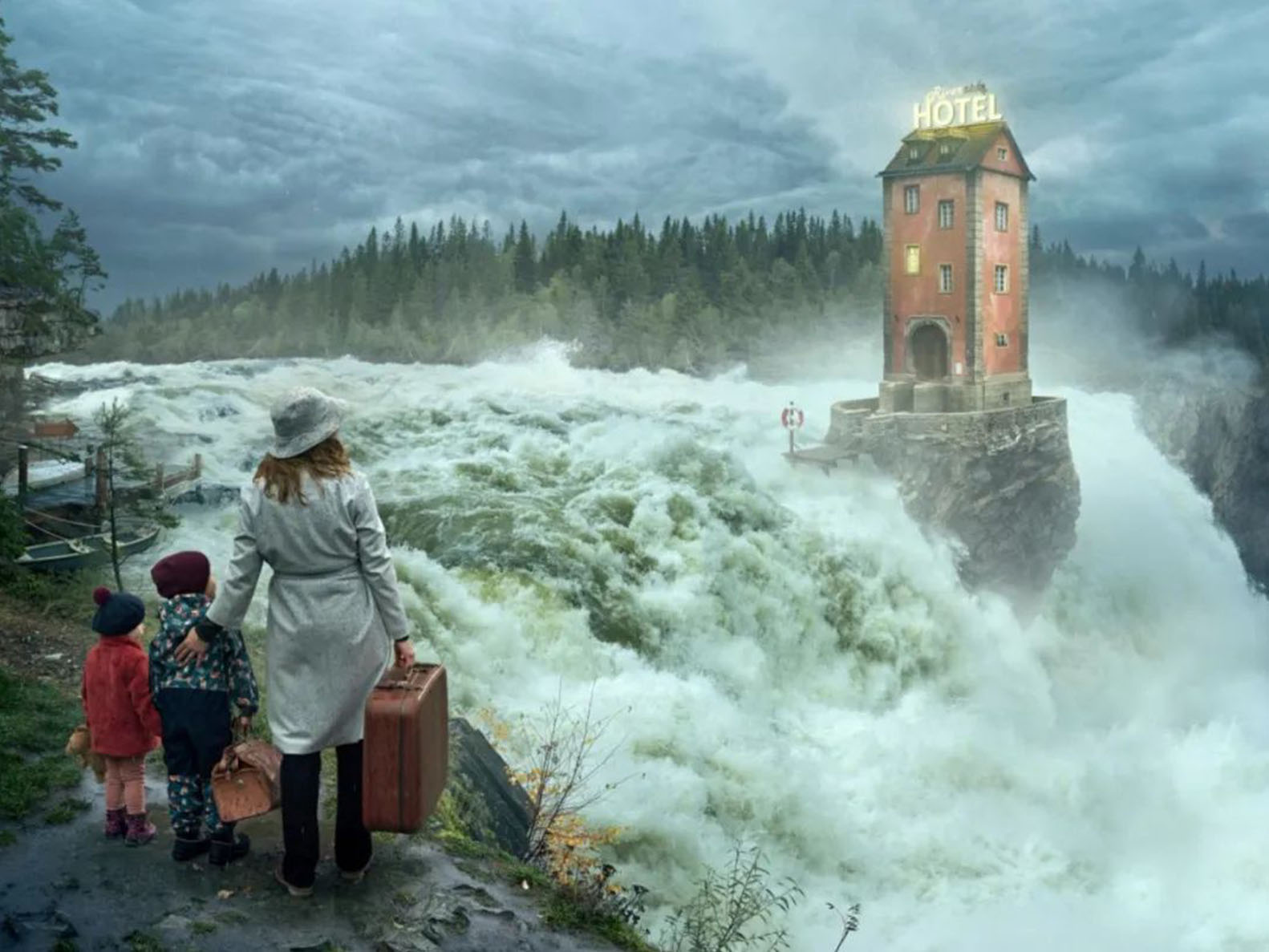

You’ve said, "The best way to create a realistic scene is to photograph it directly." With the rise of AI, VR, and AR, do you still believe this?

Yes. Photography captures the tangible, while AI generates via algorithms. These tools are complementary, not replacements. I don’t use AI-generated images because creative process requires time—not everything should be effortless.

After digital recombination, does a scene’s "authenticity" still hold?

Authenticity lies not in how something is made but in the emotions and ideas it conveys. Reality is subjective—shaped by memory and feeling. My work between reality and fiction, offering a space for viewers to interpret their own truths.

How do you stay attuned to creativity and perception in daily life?

By constantly observing my surroundings. I challenge myself daily to spot hidden compositions in the mundane. I also enjoy wordplay—terms like “reflect” that carry dual meanings. These mental exercises often spark new creative ideas.

If you had to choose one word to describe your work, what would it be?

"Meditative." It blends rationality with emotional resonance. I want my images to provoke thought, but more importantly, to evoke feeling.

If viewers only had five minutes, which work would you recommend?

All We Have is Now. It encapsulates the exhibition’s core—questioning perception, time, and existence. I hope it makes people pause and reflect on the present moment.
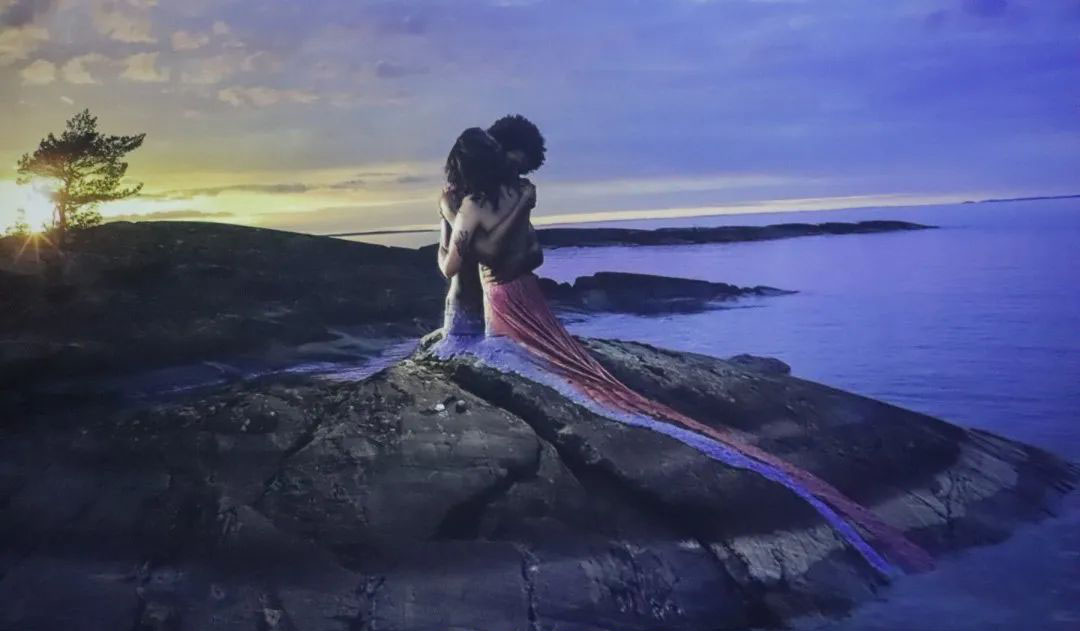
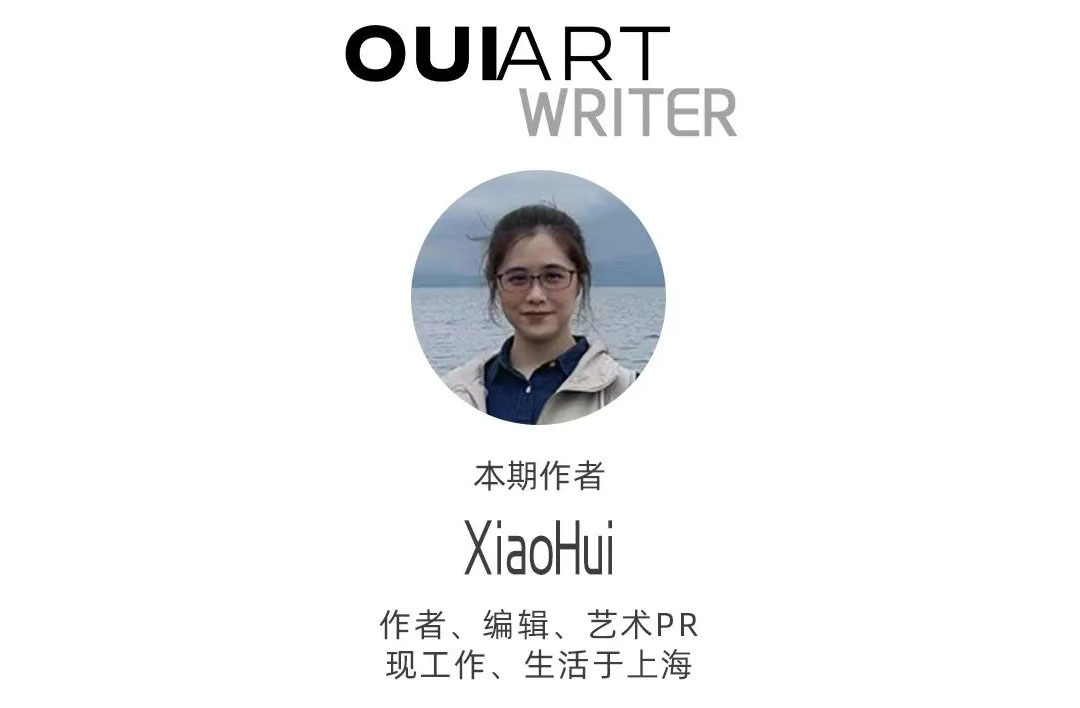
Producer:Tiffany Liu
Editor:Tiffany Liu
Video Production:Yoko Liu
Cameraman, Editing:Yuki Xiao
Photographer, Designer:Yizhou Shen
Image and text: Courtesy of Fotografiska and Oui Art
Unauthorized use is strictly prohibited without official authorization from Oui Art


